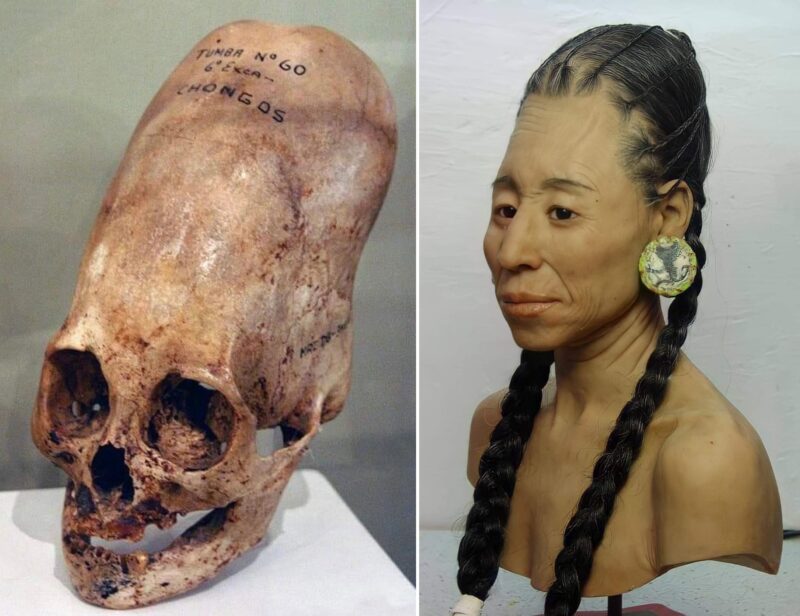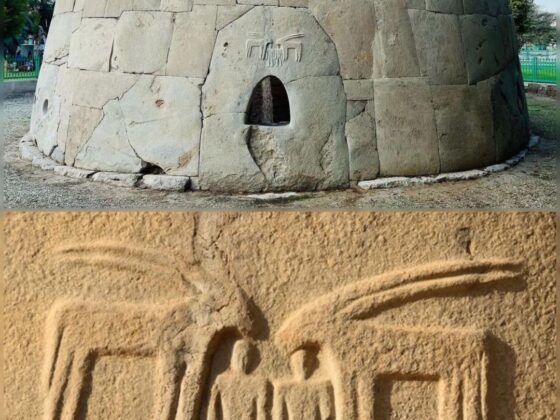The Paracas skulls, discovered in Peru in 1928 by archaeologist Julio Tello, have been a subject of scientific interest and controversy. These skulls, dating back to around 2000-100 BCE, belong to the Paracas culture and exhibit unusual characteristics that set them apart from both normal human skulls and artificially deformed skulls.
The skulls have a cranial volume up to 25% larger and are 60% heavier than conventional human skulls. They lack the sagittal suture, which is typically present in normal human skulls. The eye sockets are unusually large, up to 50% larger than those in typical human skulls. The foramen magnum, where the spinal cord enters the skull, is positioned further back than in normal skulls. Some Paracas skulls also feature small bones at the back called “Inca bones,” which are not typically found in normal human skulls.
These characteristics differ significantly from artificially deformed skulls created through cranial binding. While bound skulls maintain the same cranial volume as normal skulls and show signs of compression and flattening, Paracas skulls have a larger volume and a more natural, rounded shape. The suture lines in bound skulls are usually visible, whereas some Paracas skulls lack the sagittal suture entirely.
DNA analysis has been conducted on some of the Paracas skulls. According to Brien Foerster, who has extensively studied these skulls, preliminary results from one sample showed mtDNA with mutations unknown in any human, primate, or animal known so far. The geneticist involved in the study suggested that these results, if confirmed, could indicate a new human-like creature very distant from Homo sapiens, Neanderthals, and Denisovans.
However, it’s important to note that these findings are preliminary and have not been published in peer-reviewed scientific journals. The scientific consensus maintains that the Paracas skulls are human and likely resulted from a combination of artificial cranial deformation and possible genetic factors.
The Paracas culture, which flourished between 800 and 100 BCE, was known for advanced textile production and complex funerary practices. The elongated skulls may have been a marker of social status or had ritualistic significance within their society.
Ongoing research and more rigorous scientific studies are needed to fully understand the anomalies presented by the Paracas skulls and their place in human history.










